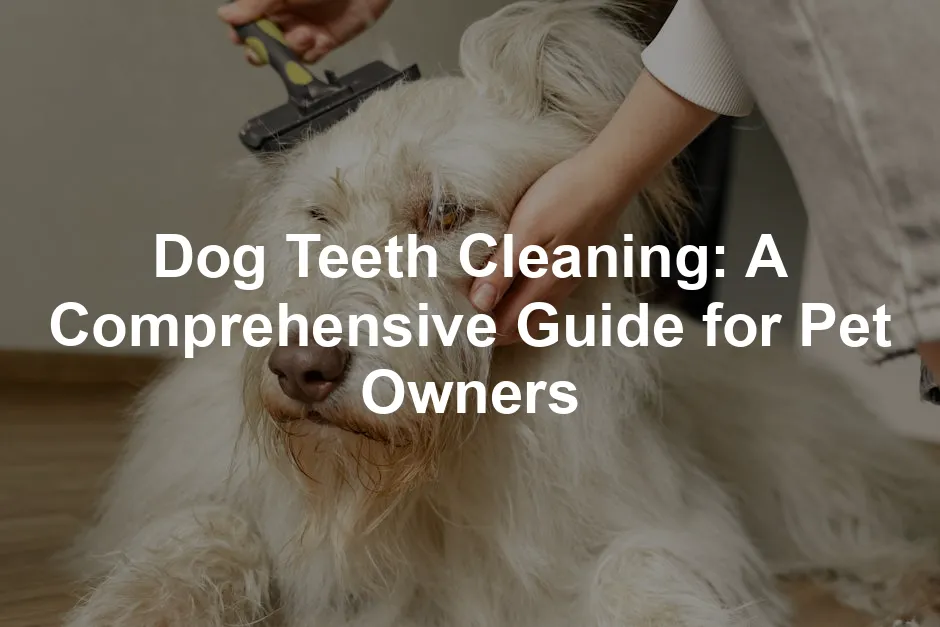Introduction
Keeping your dog’s teeth clean is crucial for their health. Poor dental hygiene leads to dental diseases, which are common in dogs. Regular teeth cleaning prevents discomfort and expensive treatments. By prioritizing dental care, you can enhance your dog’s quality of life.
Summary and Overview
In this article, we’ll discuss the essential aspects of dog teeth cleaning. You’ll discover the benefits of maintaining your dog’s dental health, the tools you’ll need, and effective brushing techniques. We’ll cover how often to clean your dog’s teeth and the signs that indicate dental problems. Starting dental care early in your dog’s life is vital, as it contributes to their overall well-being. Healthy teeth not only help prevent dental issues but also support your dog’s overall health and happiness. Regular dental care can lead to a longer, healthier life for your furry friend.
Speaking of dental care, if you’re looking for an excellent toothpaste option, check out PetSmile Professional Dog Toothpaste. It’s vet-approved and helps fight plaque, ensuring your pup’s mouth stays fresh and clean!
Importance of Dog Dental Hygiene
Why Dental Care is Crucial
Dental health is often overlooked in dogs. Did you know that by age three, about 80% of dogs show signs of periodontal disease? This condition can be painful and lead to serious health issues. Poor dental hygiene allows bacteria to enter the bloodstream, potentially harming the heart, liver, and kidneys.
Moreover, untreated dental problems can be costly. Veterinary dental treatments can range from routine cleanings to more complex surgeries, often running into hundreds or even thousands of dollars. By prioritizing dental care, you save on future vet bills and ensure your furry friend stays healthy and happy. Regular brushing and dental check-ups can significantly reduce these risks, making it clear why dental hygiene is essential for our pets.
For a more comprehensive dental care routine, consider using products like Vet’s Best Enzymatic Dog Toothpaste. It not only helps in plaque reduction but also freshens your dog’s breath, making the brushing experience more pleasant for both of you!
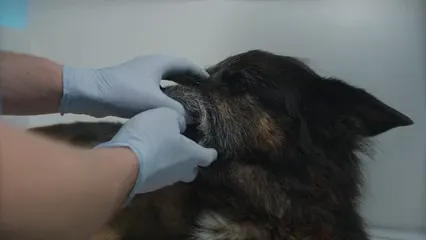
Best Practices for Dog Teeth Cleaning
Choosing the Right Tools
Selecting the right tools is vital for effective dog teeth cleaning. Always use toothpaste specifically designed for dogs. Human toothpaste contains harmful ingredients that can upset your dog’s stomach. Look for pet toothpaste in flavors like chicken or beef to make brushing more enjoyable for your pup.
For toothbrushes, options include dog-specific brushes and finger brushes. Child-sized toothbrushes can also work well. Brands like PetSmile and Vet’s Best offer quality dental products. These tools make the brushing experience easier and more effective, ensuring your dog’s dental health remains in top shape.
Don’t forget to check out the Nylabone Advanced Oral Care Dog Chews. These tasty treats help clean your dog’s teeth while they chew, making dental care a fun and tasty experience!
Techniques for Brushing
Brushing your dog’s teeth is essential for their health. Follow this simple step-by-step guide to make it effective.
- Choose the Right Time: Pick a quiet moment when your dog is calm.
- Start with Familiarization: Let your dog sniff the toothbrush and toothpaste.
- Introduce Touching: Gently touch their lips and gradually move to their teeth.
- Use Dog-Specific Toothpaste: Apply a small amount of tasty dog toothpaste to the brush.
- Brush Gently: Focus on the outer surfaces of teeth, using circular motions.
- Reward: After brushing, give your dog praise or a treat.
Starting young makes a difference. Early exposure helps dogs accept brushing as a routine. Use positive reinforcement, like treats, to encourage them. Aim to brush their teeth at least two to three times a week for optimal results. Daily brushing is ideal, but consistency is key to maintaining good dental health.
If you want a complete dental care kit, consider the Arm & Hammer Dog Dental Care Kit. This kit includes everything you need to keep your dog’s teeth clean and healthy, making dental care a breeze!
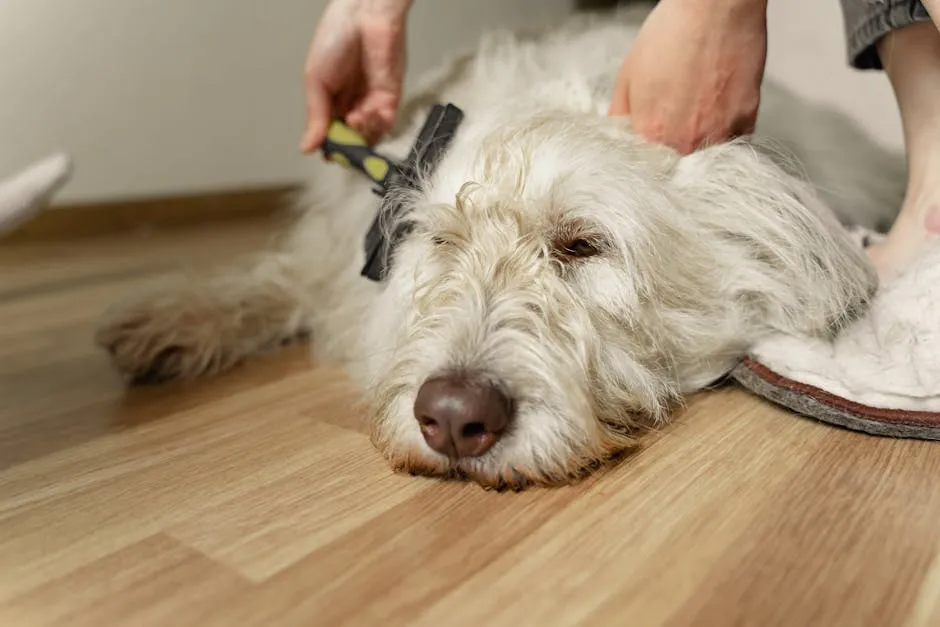
Alternatives to Brushing
If brushing isn’t an option, several alternatives can help maintain your dog’s dental health. Dental chews are popular for their ability to reduce plaque and tartar. Look for products that are specifically designed for dental care. Chew toys also encourage chewing, which can naturally clean teeth.
Consider incorporating a dental diet, specially formulated to support oral health. These foods often have textures that help scrub teeth as your dog chews.
Professional cleanings are also crucial. Your veterinarian can assess your dog’s dental health and remove tartar that brushing might miss. Additionally, consider using TropiClean Fresh Breath Dental Water Additive that helps reduce plaque and freshen breath effortlessly!
Recognizing Dental Issues in Dogs
Common Signs of Dental Disease
Is your dog showing any of these symptoms? Bad breath is often the first sign of dental problems. If you notice a strong odor, it could indicate plaque buildup or gum disease. Swollen or bleeding gums are also red flags. Check for redness or swelling around their teeth.
Tooth loss is another serious concern. If you find any missing teeth or see your dog struggling to chew, it’s time for a vet visit. Keep an eye on their eating habits. If they seem reluctant to eat or prefer softer food, dental issues might be the cause.
Regularly check your dog’s mouth for these signs. Look inside their mouth when they yawn or when you’re playing. Don’t forget the importance of routine vet check-ups. Your vet can spot problems early, preventing more serious issues down the line.
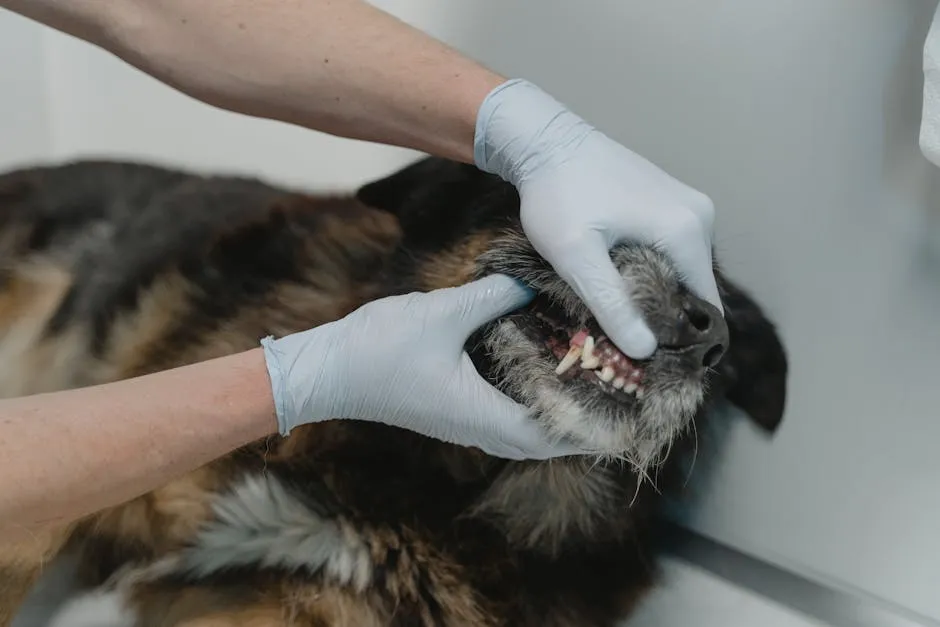
Professional Dental Care
What to Expect During a Vet Visit
When you take your dog for a professional dental cleaning, they will be placed under anesthesia. This ensures your pet is comfortable and safe throughout the process. Before the cleaning, your vet will perform assessments, including blood tests and, if needed, X-rays. These steps help ensure your dog can handle anesthesia.
Once sedated, the vet will conduct a thorough examination of your dog’s teeth and gums. They will use special tools to remove tartar and plaque above and below the gum line. After cleaning, your dog’s teeth will be polished to prevent future buildup.
Post-cleaning care is crucial. Your vet will provide instructions on how to care for your dog’s mouth after the procedure. Follow these guidelines closely to help maintain their dental health until the next visit. Regular follow-ups are key to preventing further dental issues.
Cost of Dog Teeth Cleaning
The cost of professional dog teeth cleaning can vary widely. Generally, you can expect to pay between $250 and $900 at a regular vet. If you’re visiting a specialist, the price can jump to $800 or even $1,300. Factors like your location, the vet’s experience, and the services required will influence these costs.
For instance, cities often have higher prices than rural areas. Additionally, if your dog needs extractions or advanced treatments, expect to pay more.
Pet insurance can significantly help with these expenses. Many policies cover dental care, but it’s essential to check your plan’s specifics. Some providers might exclude pre-existing conditions. Regular check-ups and preventive care can lower costs in the long run, making it easier to maintain your dog’s dental health.
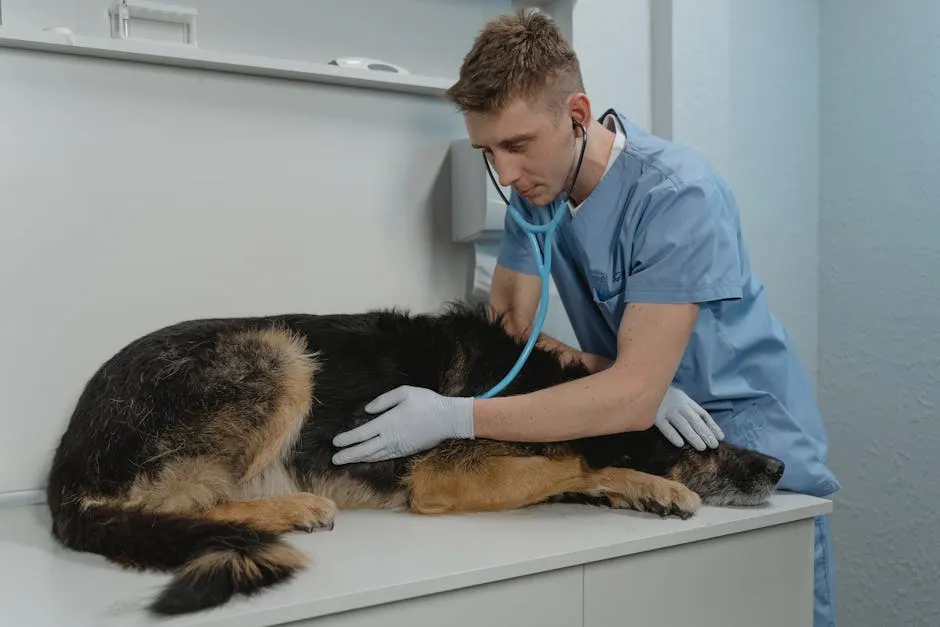
To further help with dental care, consider investing in a Vet’s Best Dental Wipes for Dogs. They make it super easy to keep your dog’s teeth clean between brushings!
Conclusion
Maintaining your dog’s dental hygiene is essential for their overall health. Regular brushing and professional cleanings can prevent painful dental diseases. Establish a routine that includes dental care, and consult your veterinarian regularly. Doing so will not only keep their teeth clean but also enhance their quality of life. A healthy mouth contributes to a happier, longer life for your furry friend.
Improving your dog’s dental hygiene is crucial for their overall health and happiness. You can learn more about enhancing your dog’s quality of life by visiting this guide to improving quality of life for dogs with cognitive dysfunction.
FAQs
How often should I brush my dog’s teeth?
Brush your dog’s teeth at least 2-3 times a week, ideally daily.
Can I use human toothpaste on my dog?
No, human toothpaste is harmful. Use dog-specific toothpaste instead.
What are the signs my dog might need a dental cleaning?
Watch for bad breath, swollen gums, or reluctance to eat.
Is dental cleaning painful for my dog?
Your dog will be under anesthesia, minimizing pain during the procedure.
Are dental chews effective for maintaining oral health?
They can help but shouldn’t replace regular brushing.
What if my dog refuses to let me brush their teeth?
Try desensitization techniques or consult a professional for help.
Please let us know what you think about our content by leaving a comment down below!
Thank you for reading till here 🙂
All images from Pexels

